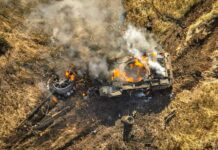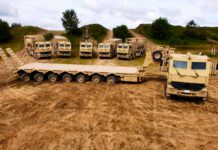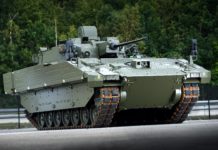As the war in Ukraine rages there have been multiple attempts to draw lessons from the conflict. The multitude of social media platforms carrying footage from the conflict have made it feel uniquely accessible and given many an insight into war that is otherwise difficult to gain without becoming a combatant.
This has empowered many to draw analysis from the conflict and seek to apply them to war as a whole. However, it is important to exercise caution on two fronts. First of all, conservative estimates indicate that there are more than 200,000 combatants in this war, and whilst there is a lot of footage available it does not cover the full experience of the enormous front line. It is consequently a limited form of information, that in any case lacks context, and so should be regarded as only part of the story. For instance, no quantity of videos showing tanks falling prey to anti-tank guided missiles (ATGMs) can serve as evidence that the tank has had its day.

The second is the peculiar nature of this war. Russia and Ukraine had both attempted to modernise their forces since 1991 and the collapse of the Soviet Union, but neither had taken considerable strides away from the artillery-centred doctrines that they inherited from the USSR. Russia had realised some of its late Soviet ambitions – not least the principle of being able to target an enemy’s critical national infrastructure, whilst also modernising its fleet of armoured fighting vehicles (AFV), but it remained an artillery army with a lot of tanks. Researchers from the Roya United Services Institute (RUSI), a think-tank based in London, who had visited Ukraine before and during the war observe that there were some Ukrainian units with command tents that most NATO officers would recognise, but that the majority of units were not far removed from their Soviet predecessors. In addition, both sides actually entered the war with a near numerical parity in artillery systems – it was the availability of munitions that separated them. Because of this, both sides represent fairly unique militaries that would have very little in common with the majority of armed forces around the world. This means that some aspects of the war are likely of limited value for those writing doctrine and lessons learned, because they arise from unusual situations and would be very unlikely – perhaps even impossible – to replicate in any other war.
Take for example, Russia’s enormous expenditure of artillery ammunition, which reached 20,000 rounds per day at some points. This aspect of the war seems to highlight the need for lots of artillery ammunition and large mechanised formations capable of providing this level of fires whilst withstanding the attrition that comes with it. The reality is that there are few militaries that can produce this kind of battlefield effect, and even fewer that would actually choose to. It is a costly process requiring enormous reserves of ammunition and personnel. It works for the Russian forces because that is how they are trained to fight, and it compensates in no small way for a certain lack of tactical proficiency. If one is considering the possibility of war with Russia, then this is an important aspect of the war to consider, but its applicability to other conflicts is questionable.
So, with this warning in mind, are there any lessons for the employment of AFVs from the war in Ukraine that are sufficiently general to be applicable to a broader audience than those that must prepare to potentially face the Russian military? There are some aspects that can be drawn upon to arrive at potentially useful recommendations, however, it is equally difficult to assess whether these lessons are fundamentally new, or revisions of past conflicts. It is most probably more useful to fold observations from Ukraine into a broader understanding of 20th and 21st century warfare, than resting solely on the outcomes of this specific war. Where possible, this article will try to do this, providing broader contextual analysis to assess whether these lessons are fundamentally new. It is fitting to start by assessing an age-old debate through the lens of Ukraine – has the tank had its day?
Tanks
A search for meaningful quotes to title this section returned nothing satisfying, this is because the end of the tank is not near and attempts to suggest as much tend to conflate the destruction of something with futility in using it. There is a tired old adage which goes: “A tank is like a dinner jacket you don’t often need one, but when you do, nothing else will do.” The reality is that tanks are like paper napkins, you don’t always need one to protect your dinner jacket, but when you do use one it is very valuable and good at its job. Once you have used it, you might fold it up and put it in your pocket to use another day, or it might get ruined in the process and you will throw it away. Tanks have been used extensively by both sides in the Ukraine war, an impressive mix of T-62s, T-64s, T-72s, T-80s and T-90s in various states of modernisation have made battlefield appearances, some of them for the first time. They have been put to use in a number of ways that are worth exploring in an effort to understand where lessons might be drawn.
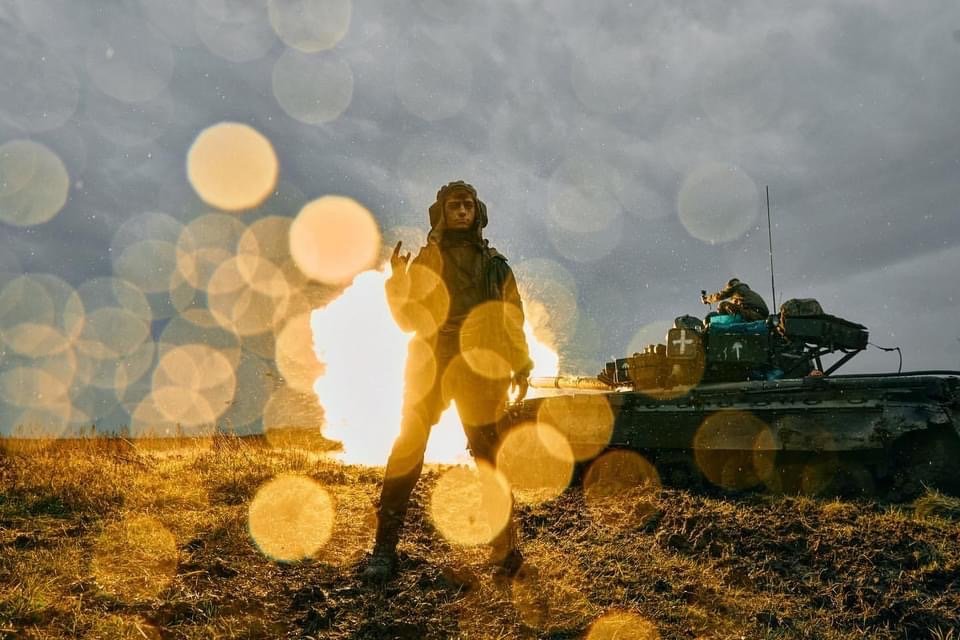
Tank on tank combat is relatively common, however, the dispersed nature of the battlefield means that at times when both sides are assuming defensive positions, it is often a single tank engaging one other. Engagements in this context can be observed to happen at very close ranges and it is interesting to note that the explosive reactive armour (ERA) arrays fitted to tanks on both sides frequently necessitate two shots for a successful engagement. The first with a high explosive round to remove the ERA, the second with a kinetic energy round to penetrate the tank and kill the crew. From here it is tempting to draw an ostensibly simple conclusion: Tanks will require two shots to kill an opposing tank. However, there are multiple aspects of this equation that are unknown. The first is the type of ammunition being used by Ukrainian and Russian tank crews.
Many early Soviet armour piercing fin stabilised discarding sabot (APFSDS) ammunition types (such as the ubiquitous 3VBM-9 ‘Zakolka’) employ a steel projectile, carrying a tungsten slug behind an armour piercing cap. Monobloc depleted uranium penetrators like the 3VBM-13 ‘Vant’, were introduced relatively late in the Soviet Union and solid tungsten carbide projectiles such as the 3VBM-17 ‘Mango’ only in 1986. They were often confined to high-priority units operating tanks like the T-80. The older rounds produce a muzzle energy of around 6 MJ, while the newer varieties such as Mango can achieve similar levels of kinetic energy, but the greater hardness and density of their projectiles when compared with steel natures (7.8 g/cm3 vs 17g/cm3 for tungsten) makes them more effective at penetrating the complex armours found on tanks. However, if they are compared with modern western natures of ammunition – even in this simplistic fashion – there is an interesting disparity. According to the late Professor Ogorkiewicz, the L44 and L55 120 mm smoothbore guns that arm most NATO tanks are capable of producing 9.8 MJ and 12.5 MJ in muzzle energy respectively. Whilst this not the only deciding factor behind APFSDS lethality, it suggests that Western tanks are significantly more lethal in tank warfare than their Russian or Ukrainian counterparts.
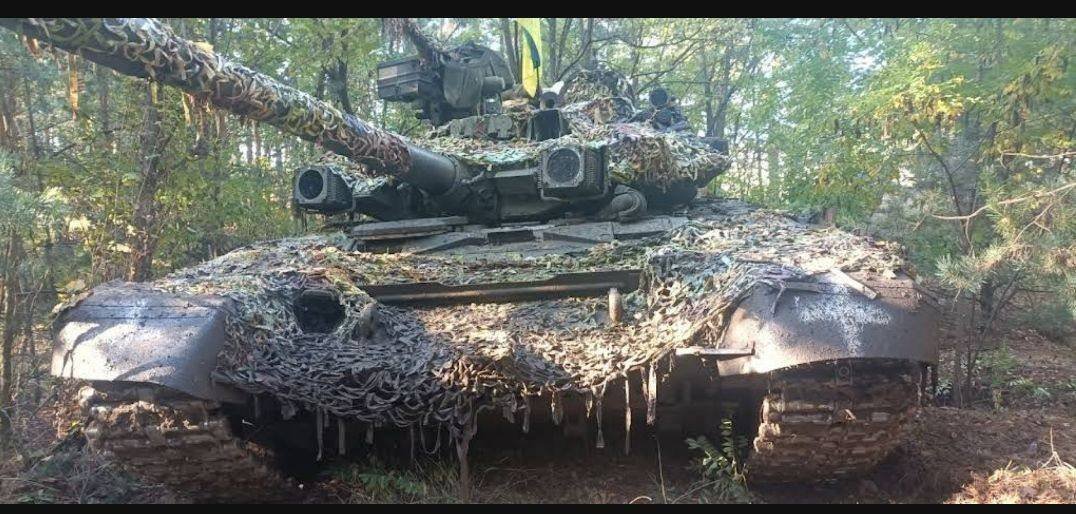
ERA primarily defeats kinetic energy rounds by momentum transfer, it requires the use of thicker and heavier front flyer plates than is typical for high explosive anti-tank (HEAT) rounds as the projectiles they are countering are heavier and larger, according to Paul Hazell, Professor of Impact Dynamics in the School of Engineering and Information Technology (SEIT) at UNSW Canberra. Essentially, the weight and force of the flyer plate changes the course of the APFSDS penetrator and may even shatter the rod into smaller pieces. However, the armour behind the ERA must be considerable to absorb the impact of those fragments. As most NATO guns fire ammunition natures that are generally longer, and capable of producing much higher muzzle energy as a result of their typically greater projectile weights (and in the case of L55 guns, higher projectile velocities as well), it stands to reason that the ‘two shot’ trend observed in Ukraine is not a general lesson that can be applied across the board. However, it is worth noting that tests of 1980s NATO ammunition natures showed that they were generally ineffective against Kontakt-5 ERA. So, perhaps it is worth delineating between older natures of ammunition, and the newer ones built upon the greater understanding of Soviet armour gleaned after the collapse of the Soviet Union.
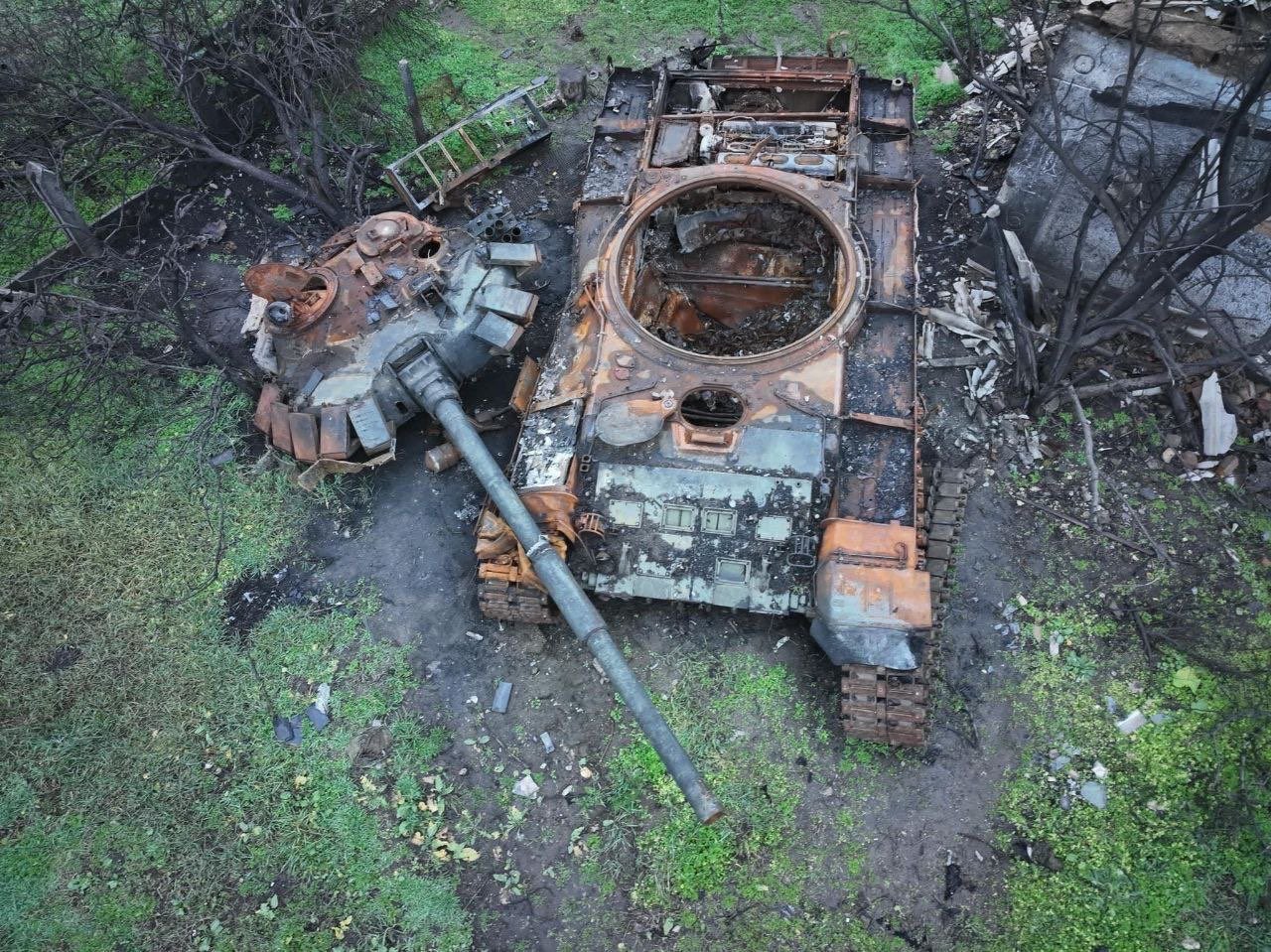
In other contexts, tanks are used to provide both direct and indirect fire support against infantry formations. Ukrainian tanks are even fitted with a sight especially for this purpose and Russian tank crews have practiced this art with direction from Orlan-10s. It is not therefore new as far as a skillset is concerned, but its application in Ukraine is interesting – if only for the challenge it represents to infantry positions. A New York Times report on fighting near Izyum states the following:
“Tanks in particular have become a serious menace, fighters said, often coming within a mile of the battalion’s positions and wreaking absolute havoc. Already this month, 13 soldiers with the battalion have been killed and more than 60 wounded.”
A RUSI report on the initial lessons of the war indicates that Ukraine was able to employ its tanks as a mobile reserve. In effect, their indirect fire enabled them to act as artillery and armour simultaneously and engage Russian forces at opportune moments. They were reportedly accurate out to ranges of 10 km and required very little time for adjustment of their fire.
The absence of other tanks and paucity of anti-tank weapons – as well as the limited range of the latter – mean that tanks can be very destructive in the right circumstances. Indeed, Syrian tanks are known to have caused hundreds of casualties in a single afternoon of fighting because of the absence of any anti-tank weaponry. The absence of tanks has been felt in other conflicts, too. Coalition troops fighting in Afghanistan would often be pinned down by the firepower of Taliban forces, leading them to rely upon attack helicopters and close air support to extract themselves from the firefight. The presence of a tank in this circumstance – as well as other AFVs with medium calibre cannons – would completely reverse this disparity in firepower. In Panzer Ace, the published memoirs of Richard von Rosen, a German tank commander in World War 2, Rosen retells occasions where Soviet anti-tank guns would be quickly silenced leaving their infantry at the mercy of the armoured formations and leading to heavy enemy losses.
Tanks are also a critical element of offensive operations, and it is abundantly clear that failing to support them with infantry and infantry fighting vehicles (IFVs) will lead to them being isolated and destroyed. However, as an element of an offensive operation they are absolutely critical because of the protection they offer. As mentioned above they are decisive in engagements against infantry formations in part because they require specialised tools to defeat them. This makes them central to effective offensive operations as they require effort and focus to kill, and in many cases will require more than one successful hit. They are, regardless of the images of tanks being destroyed, hard to stop, and they can be catastrophic for infantry without the right tools.

It follows that tank supremacy is a relatively constant aspect of warfare. If an infantry formation can be isolated from its supporting effectors and engaged by tanks, it will likely suffer heavy losses. So, whilst the use of tanks to provide indirect fire support against positions in Ukraine may be somewhat novel, the superiority of tanks in the absence of anti-tank weapons is not. What, therefore, can be made of ATGMs and their use in Ukraine?
ATGMs
ATGMs have proliferated rapidly even within the Russian armed forces. They have moved from an extremely expensive asset assigned to commanders and a few others in the Soviet army, to something that is likely to be found in almost every section. The Ukrainians started the war with a healthy arsenal of domestically-developed ATGMs such as the Stugna-P from the Luch Design Bureau. The influx of western weapons like FGM-148 Javelin and NLAW served to distract much of the focus from Ukraine’s own capabilities, but have nonetheless proven themselves to be valuable assets despite minimal training. The lethality of ATGMs against armoured vehicles is a well-understood aspect of the modern battlefield. The way in which the high explosive anti-tank (HEAT) warheads that arm most ATGMs work, means that they are very difficult to stop. The tip of a HEAT jet can reach speeds of 10 km/s, although it may only be 2-3 mm in diameter, and depending on the overall warhead diameter, many modern HEAT warheads can penetrate over 1,000 mm of solid steel. Despite such capabilities, even successful hits do not always lead to penetration or the vehicle’s destruction. Israeli forces operating Merkava tanks were deployed to Lebanon in 2006, and were subject to multiple successful ATGM impacts, with more than 50 tanks being hit. Of the 50 hits, 21 tanks were penetrated leading to 10 vehicles suffering casualties. It is therefore possible for modern tanks to withstand high levels of ATGM attacks without the crew or vehicle becoming incapacitated, this is largely thanks to improvements in survivability such as trading flammable hydraulic fluid-based turret control systems for electric motors, safer ammunition storage and other modifications.
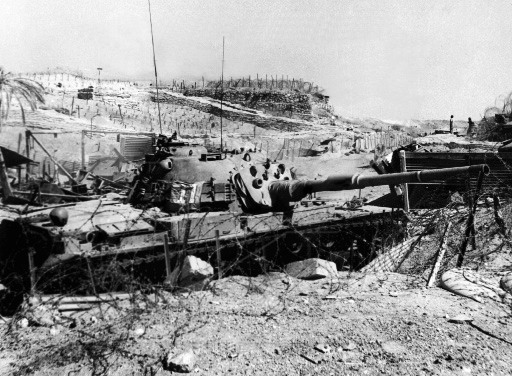
So, what can we learn about ATGMs from Ukraine? Combining Ukraine with other conflicts it is apparent that the healthy penetration characteristics of modern HEAT warheads do not neatly translate into definite kills – against heavily armoured vehicles at least. Ukraine mostly confirms that tanks remain survivable, and other conflicts confirm that some are more survivable than others. One element of the War in Ukraine that is perhaps unique, however, is the sheer mass of ATGMs. They are present in such numbers that units feel comfortable using them to engage bunkers, trucks, light armoured vehicles, personnel, and any other target that can be justified. This free-spirited use of ATGMs is not new, it was common for forces deployed to Afghanistan to use Javelin as a form of long-range precision strike as opposed to close air support or artillery. It reflects a wider truism of militaries and war; troops will most likely use the most effective and safest tool they have to hand, not the cheapest or hardest. However, there is a lesson to be observed in the mass of ATGMs and how they impact armoured operations.
ATGMs were first used in a concerted and massed fashion during the 1973 Yom Kippur War, that oft-studied conflict has impacted the US and other militaries quite considerably. The Egyptian and Syrian forces used 9M14 Malyutka ‘AT-3 Sagger’ missiles and attained penetration rates of 60% when the target was successfully hit. This led to an average of two deaths per vehicle. In response, Israeli vehicle survivability advanced considerably thereafter, leading to reduced casualties per successful penetration. Egypt had massed its Malyutkas, stripping them from reserve units and allocating them to frontline infantry in anticipation of an Israeli armoured counterattack in response to the crossing of the Sinai River. The Malyutka crews had also spent three years practicing with their weapons to ensure that they were as capable as possible. However, the Israeli forces obligingly deployed their armour in ‘penny packets’ (small groups) without infantry support, prompting the Egyptian chief of staff to remark in his diary that he had not expected the Israeli forces to be so cooperative. So, the Yom Kippur war served to illustrate that massed ATGM deployments could blunt a massed armour advance, but also reinforced the lesson already known from World War II (arguably even WWI), that armoured vehicles alone were vulnerable.

So, is the massed use of ATGMs in Ukraine proving anything fundamentally different? Is there anything outside of the established understanding of combined arms doctrine that can be accounted for? US Army publications on combined arms manoeuvre note that “no single arm can be decisive,” making combined arms operations essential to defeating the enemy. It stands to reason that any observations on the efficacy of ATGMs – or any combination of weapons and tactics for that matter – against formations consisting only of tanks are unhelpful, and do not meaningfully add to our understanding of modern warfare.
However, the efficacy of ATGMs has arguably been maintained from 1973. It is apparent that advancing against an enemy with only one or two tanks and a small contingent of infantry, when ATGMs are present is unlikely to yield results, mostly because the large quantity of ATGMs makes the defenders well-placed to defeat the most threatening element of that force package. Yet and at the same time, we must consider the shape of the Ukrainian battlespace. It has been observed by many that neither side appears capable – or willing – of forming much more than a company-sized battle group for offensive operations. In any other scenario this would amount to ‘penny packet’ deployments, but in Ukraine this might be a result of both attrition and the enormous size of the front line being fought over. It means that the defender may only have to destroy or disable a few vehicles in order to deter the attacker from proceeding, which in turn magnifies the effect of ATGMs.
So, whilst the need for effective counter-ATGM tactics clearly remains and should be forefront in the minds of armoured forces, there is a question of scale. If the scale of attacking forces is greater, then the density of ATGMs required to exert an effect would have to increase commensurately. It cannot, therefore, be taken for granted that ATGMs represent the same level and type of threat across the spectrum of conflict. Active Protection Systems (APSs) such as Trophy and Iron Fist would likely return MBTs to a high level of survivability in sub-peer conflict scenarios. Such scenarios often involve urban warfare, which can make combined arms manoeuvre difficult because of a lack of space or scope to do so. However, ATGM uses in these conflicts tends to be restricted to one or two per engagement, alongside shoulder fired weapons like the RPG-7. In peer conflicts APSs will also help tanks to maintain survivability, but countering massed ATGMs will depend on the force’s ability to suppress ATGM teams and supporting armour with infantry or vice versa.
In sum, Ukraine suggests that ATGMs remain lethal against armour, somewhat justifying the interest in APSs. Combined arms manoeuvre remains critical for survivability against these threats, and their massed use can make armoured formations risky to employ. Ukraine once more raises the question of how the scale of ATGM use impacts a formation. It is less about the lethality – this is already well-understood – but rather a question of how ATGMs concentrated in a small area can impact a formation, and what adaptations are needed to counter them. One further consideration which should be factored into ‘lessons learned’ assessments, is how representative the fighting in Ukraine is of broader developments on the modern battlefield.

(Photo: USMC/SSgt Reece Lodder)
Cannons, Cannons, Everywhere
From these limited examples, it is possible to argue that the tank’s status is not fundamentally changed by the war in Ukraine and ATGMs remain a problem, although not insurmountable. In many ways, these ‘lessons’ were well understood, Ukraine provides a convenient streetlight under which analysts may look. There is, however, one aspect of the war that is worth labouring, if only for the fact that it has received less attention during past wars than things like air defence or the utility of airpower, and that is the role of the medium calibre cannon. Both sides have employed the 2A42 Shipunov 30 mm cannon that arms BMP-2s, BMD-2s, and the 2A72, a lighter derivative that can be found on BTR-82As and Russia’s BMP-3 and BMD-4M vehicles. Ukraine also employs a locally manufactured version on its BTR-3 and BTR-4 wheeled IFVs. The cannons are prolific and have shaped combat for both sides, see for example this account from a Ukrainian fighter:
“Russian BTR vehicles I think are worse than tanks. The gun on them fires faster and they carry soldiers. If we see a BTR there are soldiers near it. If we see a tank sometimes it is alone and easier to destroy. Wounds from these are horrible. A whole leg can be removed. A shot to the body makes someone almost explode. They are easy to destroy but not good to fight directly.”
The power of the cannon is ferocious. The 2A72 is capable of firing 500 rds/min and in the BMP-3 is stabilised in both axes and connected to a fire control system that enables good accuracy at range. The high rate of fire is partially a result of the weapons being gas operated. In fact, the rate of fire can increase as the barrel heats up, as heat loss from the propellant gases is reduced, leading to higher pressures that in turn cycle the weapon’s operating mechanisms faster.

The firepower of these cannons means that they can be used to dominate infantry formations from a distance, and they are also reasonably potent, which means they can – in a desperate situation – impart damage onto a tank. Both of these uses for the medium calibre cannon have been observed in Ukraine and it is apparent that infantry formations fare poorly against cannons if they are not supported. They also play an important role in urban warfare as they are capable of suppressing positions from ranges that are likely to be beyond the reach of the standard shoulder-fired anti-armour weapons carried by infantry formations.
This is not a completely novel trend either. US forces in Iraq in 1991 and again in 2003 used the 25 mm M242 that armed the M2/M3 Bradley IFV to great effect, even disabling dug-in T-62s with shots through the roof of the turret. They were invaluable in urban combat, providing rapid and demoralising direct fire against infantry in buildings and through walls if necessary. The UK similarly used its 30 mm RARDEN cannons to good effect – albeit in a few limited examples – during the Falklands War in 1982. Cannons were also used as a form of precision direct fire in Afghanistan where they served to quickly suppress Taliban forces, and similar outcomes have been reported by French forces fighting in Mali. Ukraine does, however, show the absolutely critical utility of these weapons in a peer conflict. Many previous uses for these weapons have involved unequal fights with one side perhaps better equipped and trained than the other, or other complicating factors that suggest the benefits of the weapons might not be universal. Their use in Ukraine shows that they are an extremely lethal and useful weapon, which explains in part why most AFVs in NATO now carry them.
The important takeaway is the need to understand the risk generated by vehicles that do not carry cannons, encountering those that do. How, for example, will the UK’s fleet of Boxers fare in a peer war if they are not equipped with medium calibre weapons? If nothing else, the medium calibre cannon is an eminently useful weapon. It can be used to engage a broad variety of targets and confers decisive lethality upon infantry formations. Arguably, this was already known – or at least suspected – but the Ukraine war has proven it to be true in a high intensity peer on peer environment.
Conclusion
Although at the time of writing and publication, the Ukraine war was approaching a year in duration, it is still not clear that there are any neatly defined lessons for AFV operators. At present, it is fair to argue that Ukraine is providing data, that in some cases can be analysed to become knowledge. But it has not yet reached the point where the knowledge can be considered information or wisdom. The above indicates that careful consideration is required to ensure that ‘new’ lessons are not simply old lessons relearned. Perhaps a more considered approach would see the nature of combat in Ukraine assessed alongside previous analysis of other conflicts, to arrive at a set of combat truths around which militaries can build their doctrine and AFV requirements.
There are of course some lessons to be learned from Ukraine. For instance, the impact of drones upon the battlefield is far-reaching. Although again, there is a need to discern that which is fundamentally new about the war in Ukraine, and that which has been seen before. There are lessons for cyber warriors around the effort and resources required to protect national data from determined and focused cyber-attacks. There are also lessons to be relearned about deterrence and the nature of inter-state competition, and the role that armed forces ultimately play. For AFVs, it is not clear – in this author’s opinion – that Ukraine has demonstrated any lessons that are fundamentally new to the world of armoured warfare. Novel and inventive tactics using legacy systems have proven fruitful, as is often the case in war, and unimaginative tactics have been punished, but it seems unwise to argue that every tactic employed by Ukraine, or every experience of a Russian armoured group is universally binding. Nevertheless, it should serve as a potent reminder of the scale of effort and commitment required to maintain armoured forces and send them to war, as well as the absolute central role that they will play.
Sam Cranny-Evans





